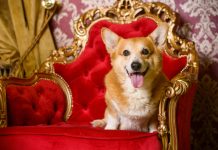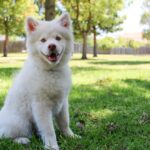Welcome to the captivating world of Corgi dogs and their breed standard. These charming canines have a rich history and a set of criteria that define their unique qualities.
Understanding the Breed Standard of Corgi Dogs
Breed standards play a crucial role in dog breeds, serving as a guideline for breeders, judges, and enthusiasts. In the case of Corgi dogs, the breed standard outlines the ideal characteristics that set them apart.
Tracing the Historical Background: Evolution of the Corgi Breed Standard
To truly understand the breed standard, it’s important to delve into their origins and historical background. From their humble beginnings as working dogs in Wales to their rise in popularity, their history has shaped their breed standard.
Analyzing Anatomy and Physical Characteristics: Key Elements of the Breed Standard
The breed standard defines the structure and conformation of Corgi dogs. We will explore their compact size, sturdy build, and distinctive features such as their broad skulls and expressive eyes.
Temperament and Personality Traits
Beyond physical attributes, the breed standard also encompasses the temperament and personality traits that define Corgi dogs. We will unravel their ideal temperament, which includes intelligence, alertness, and affectionate nature.
Size and Proportions: Meeting the Standards for Corgi Dogs
Size and proportions are crucial aspects of the Corgi breed standard. We will discuss the desired height, weight, and overall balance that contribute to the Corgi’s distinctive appearance.
Head and Facial Features: Defining Characteristics in the Breed Standard
The breed standard pays special attention to the head and facial features of Corgi dogs. We will analyze their skull structure, muzzle length, and expressions, as well as the significance of markings such as masks and blazes.
Coat and Colors: Exploring Variations Allowed by the Breed Standard
Corgis are known for their beautiful coats, and the breed standard outlines the acceptable coat types and colours. We will explore the variations in coat length, texture, and patterns, shedding light on their grooming needs.
Tail and Tail Set: Examining the Importance of Tail Structure
The breed standard places importance on the tail and tail set of Corgi dogs. We will examine the desired tail characteristics, such as correct length, and carriage, and how it relates to their overall balance and movement.
Legs, Feet, and Movement: The Role of Conformation in Corgi Dogs
Corgi dogs are known for their distinctive movement and agility. We will delve into the breed standard’s specifications for their legs, feet, and movement, highlighting the importance of sound structure and efficient gait.
Ears and Eyes: Highlighting Desired Characteristics in the Breed Standard
The breed standard also details the desired characteristics of Corgi ears and eyes. We will explore their shape, size, placement, and expression, as well as their role in capturing the breed’s signature look.
Bite and Teeth: Dental Health and Requirements for Corgi Dogs
Dental health is crucial for Corgi dogs, and the breed standard addresses the bite and teeth. We will discuss the ideal bite alignment, dental health considerations, and the importance of proper dental care.
Disqualifications and Faults: Deviations from the Breed Standard
Deviation from the breed standard can result in disqualifications and faults. We will highlight the characteristics that may lead to disqualification in dog shows or affect breeding eligibility, emphasizing the importance of adherence to the standard.
Breed Standard Variations in Different Corgi Breeds
While Corgis share common traits, there are distinct breed standards for different Corgi breeds, such as Pembroke Welsh Corgis and Cardigan Welsh Corgis. We will examine the variations in their breed standards and specific characteristics.
Breed Standard of Corgi Dogs and Evolution
Like any other breed, the Corgi dog has evolved over time. We will discuss how changes in preferences, advancements in breeding practices, and the influence of breed clubs have shaped the current breed standard.
Breed Standard and Responsible Breeding
The breed standard plays a crucial role in responsible breeding practices. We will explore how breeders utilize the standard to make informed decisions, ensuring the preservation and improvement of the breed’s qualities while prioritizing health and temperament.
Breed Standard and Health
The breed standard not only defines the physical appearance of Corgi dogs but also impacts their overall health. We will address breed-specific health concerns and discuss how the breed standard can contribute to promoting and maintaining the well-being of Corgis.
Breed Standard of Corgi Dogs: Interpretation and Controversies
Interpretations of the breed standard can vary, leading to debates and controversies within the Corgi community. We will examine differing perspectives, controversies surrounding specific traits, and the impact of personal preferences on breed standard adherence.
Conclusion
Understanding the breed standard is essential for breeders, owners, and enthusiasts alike. It serves as a guide to preserving the unique qualities of this beloved breed. By exploring the historical background, physical characteristics, temperament traits, and various aspects outlined in the breed standard, we gain a deeper appreciation for Corgi’s remarkable heritage and the importance of upholding its standards. Embracing and respecting the breed standard ensures the continued legacy of Corgi dogs as lovable, loyal, and exceptional companions.
Remember, a breed standard is a valuable tool that promotes responsible breeding practices and preserves the breed’s distinct qualities for generations to come.
To learn more about the fascinating history of Corgi dogs, explore our article on Corgi Dogs: A Historical Journey of Love and Loyalty.


















